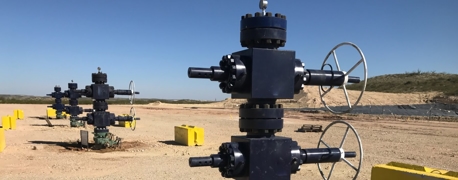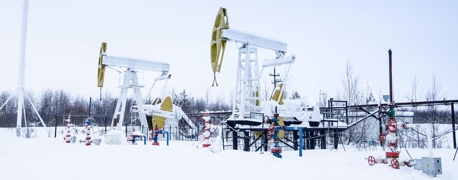Fracking 101: What It Is & Why It’s a Big Deal

Fracking, or hydraulic fracturing, is a form of energy production that has been gaining more attention as the cost of natural gas rises. For example, Ohio lawmakers recently opened up all state land to fracking operations. While some may be quick to dismiss fracking as hazardous industrial activity, it's important to understand the process to make an informed decision. That's why this guide aims to provide readers with all the necessary information on fracking—from what it is and how it works, through its environmental and economic impacts—so they can make up their own minds. This comprehensive guide will explain the basics of fracking, cover both its pros and cons, along with potential safety measures and other key topics related to this controversial practice. So whether your mind is made up or you're interested in learning more about this growing trend, this guide promises to deliver an educational look into hydraulic fracturing.
What Is Fracking & How Does It Work?
Fracking is a gas extraction method used to gain access to natural gas resources that are trapped within shale rock deep underground. It uses high-pressure pumps to inject a mixture of water, sand, and chemicals into the shale layer at depths between 1km and 4km. This pressurized "slickwater" mixture creates fractures in the rock which releases the trapped natural gas. The gas then rises up through the well and is captured by the rig for use as an energy resource.
The process begins with the drilling of a vertical or horizontal well at least 1km below ground. After digging down to the desired depth, specially designed pumps inject slickwater into the shale layer at pressures up to 9,000 psi. The pressure causes small fissures to appear in the shale rock, creating paths for trapped natural gas molecules to escape from their prison of rock. Once released, these molecules rise up within the wellbore and are collected by specialized equipment located on top of the wellhead.
The slickwater mixture used in fracking contains small amounts of chemicals to reduce friction so that pressurized liquid can travel further into deeper layers of rock. This reduces operational costs while making it easier to extract hard-to-reach energy resources. In addition, fracking helps increase production yields which makes accessing energy sources more cost-effective than traditional methods such as mining coal or drilling for oil.
The Benefits of Fracking
The economic benefits of fracking for the US have been substantial. Thanks to the increased domestic oil and gas supplies produced by fracking, energy prices have overall been lowered, providing a significant relief to American households. According to a Brookings Institute study in 2015, energy prices had dropped by 47% since 2013 as a result of this practice. This translates into an average savings of $200 per household from 2007 to 2013, and even greater economic benefits for those living near fracking sites, with a reported potential of up to $2,000 per year per household.
In addition to lower energy costs, fracking has also enabled the US to be less reliant on foreign sources of energy. In fact, it has provided the US with greater autonomy in terms of its access to oil and gas resources. This is especially beneficial as it reduces our dependence on imports from politically unstable regions which can render us vulnerable if resources are disrupted or withheld due to political tensions.
Higher domestic production of oil and gas from fracking has helped stimulate economic activity within the US itself. An increasing number of jobs have become available in various sectors related to fracking such as drilling and transportation. Additionally, local communities often benefit from new taxes generated by these activities as well as businesses that crop up due to higher economic activity in the area around fracking sites.
Despite some environmental concerns associated with the practice, it is undeniable that fracking has brought about numerous economic benefits for the US overall; not only do we enjoy lower energy costs, but we also reap the rewards that come with increased domestic production of oil and gas.
Drill Pads Contain an Enormous Amount of Equipment
Before the drilling begins, the well drilling company requires between three and five acres of cleared land for the drill pad. Then the area is crowded with equipment, including up to 20 diesel-powered compressors, 30 frac tanks for slickwater storage, storage tanks for natural gas and recovered water, the delivery system for sand proppants, truck-mounted hoppers, a crane, and an assortment of high-pressure tanks and hoses.
The sheer amount of equipment required to conduct “unconventional drilling” is why the accident rate for equipment accidents is so high. It’s not uncommon for workers to have their hands or fingers crushed by hydraulic equipment or to be entangled in fast-moving parts.
Fracking Has an Alarmingly High Fatality Rate
From 2003 to 2012, BLS data found the death rate among oil and gas operations was 26 per 100,000 workers—6.5 times the U.S. worker average. NIOSH found that the fatality rate was directly correlated to the amount of fracking activity nationwide or in a given state. For example, a single North Dakota county hospital saw ER visits quadruple from 2010 to 2012 after fracking operations increased. The whole state reported that trauma cases tripled from 2007 to 2012.
Common injuries include:
- Burns
- Mangled hands and fingers
- Spine injuries
- Fractures
- Blunt force impact
- Lacerations
The highest number of fatalities was due to transportation accidents, followed by contact with objects or equipment. Transportation accidents are largely trucking accidents; large trucks are required to deliver equipment and supplies for fracking operations.
Extraction Companies Are Hiding the True Injury Rate
The oil and gas industry has a notably high injury rate, but there’s reason to believe that even this injury rate is far lower than the reality. That’s because of how extraction companies secure business. Every workers’ comp claim leads to an accident report associated with the worker’s employer. If a company has too many accidents on its record, it will stop getting business.
You might think this incentivizes safer practices, but instead it incentivizes companies to bribe their employees into not reporting accidents. One worker reported to Mother Jones that after his vertebrae were crushed in an accident, the company offered him a full year’s pay to not file a workers’ comp claim. These practices distort the oil and gas industry’s reported accident rate.
The injury rate is further distorted by another element: exposure to crystalline silica. Fracking sand contains crystalline silica, which can travel anywhere across the drill site. Workers who breathe in crystalline silica risk developing a condition known as silicosis. A NIOSH study found that the worksite protections from respirable crystalline silica were insufficient to shield workers from long-term harm.
It’s currently unknown if silica dust travels beyond the well pad or mining site.
Infant Health Problems Potentially Caused by Fracking
There is a growing body of evidence that is becoming increasingly difficult to ignore regarding health problems arising due to fracking. One of the most worrying claims is that the proximity to a fracking site can increase the risk of certain health issues in infants. One study found that babies born within two miles of a fracking site are more likely to suffer from poorer health than those born further away from the sites. This suggests that pollutants released as part of the fracking process can cause harm to newborns.
Byproducts such as benzene, which is known for its carcinogenic properties, have been linked to an increased rate of childhood leukemia and other forms of cancer when exposed during development. Other toxic compounds like methane, arsenic, radon and lead have also been noted as possible causes for adverse health effects in children who live near sites where hydraulic fracturing has taken place.
Even adults have reported long-term respiratory ailments have been reported by those living close to wells. Over 1 million wells were fractured between 1940 and 2014, but over a third of them were fractured since 2000.
It is clear that much more research needs to be done to understand the far-reaching consequences of harmful substances released through fracking on human life. As we move forward, steps should be taken both at a regulatory level and within society itself in order to ensure safe working conditions for those involved with oil and gas production and minimize any potential harm caused by fracking operations.
Hard Choices Lie Ahead
In conclusion, there is no doubt that fracking has had a significant impact on the national economy. It has enabled access to previously inaccessible sources of natural gas and provided significant cost benefits. However, due to its associated health and environmental risks, it is clear that more research is needed to understand the potential impacts of long-term use and determine whether they outweigh the economic benefits. In addition, different approaches to using freshwater resources need to be discussed in order for communities facing water shortages to balance their need for industry with their need for uncontaminated drinking water. Ultimately, it will be up to decision-makers and citizens alike to weigh both sides of this issue before enacting or rejecting popular energy extraction measures like fracking.


